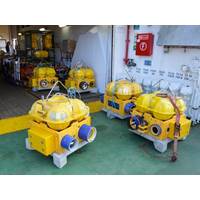
Longest-Runout Undersea Sediment Flows Analyzed in Unprecedented Detail
per second (m/s) over a distance of 1,100 kilometres - from the mouth of the Congo River through the Congo deep-sea fan and canyon system. These are the longest-runout sediment flows ever recorded. The flows also damaged several submarine cables in January and March 2020, disrupting internet and data communications in West Africa during a particularly critical phase of the early COVID-19 pandemic.The results show that the dense front of these canyon-flushing turbidity currents is not a single continuous flow, but consists of many pulses, each lasting between five and 30 minutes. The fastest pulses occur

A New Thriller About an Amazing Rescue
is timely to recall the effective action of those involved in his rescue as Focus Features is releasing a thriller about it on February 28.The probable cause of the DP 2 system failure in Lemons’ case was determined to be a single fault which caused blocking of the DP system's internal data communications.An upcoming issue of Maritime Reporter magazine will take a look at what is driving innovation in DP system technology today.Starring Woody Harrelson, Simu Liu and Finn Cole, and made by Longshot Films and Dark Castle Entertainment, Last Breath is based on a 2019 documentary of the same name

SLB OneSubsea Eyes C-Power’s Wave Energy Tech for Powering Subsea Assets
; said Mads Hjelmeland, CEO of SLB OneSubsea.“Subsea Integration Alliance partners SLB OneSubsea and Subsea 7 are world leaders in providing essential subsea products and services. They know the ocean is a power and communications desert and share our vision for remote power generation and data communications that reduce the cost, complexity, and carbon intensity of offshore operations by unlocking autonomous, digital, electric, and resident hardware and service solutions that aren’t possible today,” added C-Power CEO Reenst Lesemann.SLB OneSubsea, C-Power, and Subsea7 are leveraging
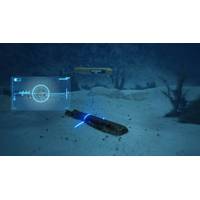
Racing to the Bottom: Seabed Warfare Brings Threats, Opportunities
United States employed highly specialized manned submarines to tap Soviet undersea cables in the Barents Sea and Sea of Okhotsk.Image courtesy VoyisToday, there are 785,000 miles (1.2 million kilometers) of transoceanic undersea cables crisscrossing the globe, transmitting 97% of global voice and data communications, the disruption of which could wreak havoc on everything from financial transactions to military operations. Although not immune to fishing trawlers and seismic instability, seabed infrastructure has for decades enjoyed a veil of invulnerability to targeted threats given its challenging operating

Oi Americas 2023: Call for Papers
of the marine and coastal environment. The technical track program will cover all stages of ocean technology innovation; seamlessly connecting technology push with application pull.The 2023 event will see content delivered on: Sensors & Instruments, Vessels, Vehicles & Platforms, Data Communications, Data Analysis and more. If this sounds like you, please submit your paper and we’ll be in touch.Click here for more information
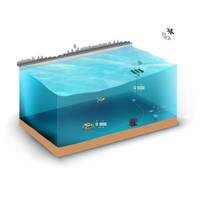
Energy @ Sea: Powering Up in the Blue Desert
10 challenges—goals for regional, national and global participants to work towards for positive, collective impact on our oceans. Included in the 10 are ocean-based solutions for climate change, expanding the Global Ocean Observing System, creating a digital representation of the sea, and access to data and technology across all marine stakeholders. These and others on the list depend on collecting increasingly more ocean data. While technology to monitor marine systems is rapidly adapting and expanding, it surfaces new issues such as offshore energy generation and storage to support sensors, operating
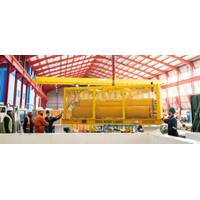
EC-OG's Subsea Battery For "World-first" Autonomous Offshore Power Trials in Hawaii
world-first demonstration project alongside our client C-Power and other project partners.“This is a crucial project for the industry which will demonstrate the integration of a selection of novel subsea technologies to deliver a reliable source of power as well as real-time over-the-horizon data communications. The learnings from this project will be significant for the development of the blue economy and further decarbonization of offshore operations globally.”Designed for the harsh subsea environment, the Halo system is a modular and scalable battery storage solution and gateway for renewable
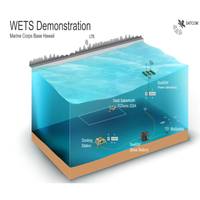
Seabed Power: Waves Used to Power Up Sabertooth Autonomous Vehicle
Converted energy from waves powering a Saab Seaeye Sabertooth autonomous vehicle operating in seabed residency mode is a renewable energy breakthrough being put to the test. C-Power’s SeaRAY Autonomous Offshore Power System (AOPS) provides offshore power, energy storage, and real-time data communications for resident marine systems.Trials of the Sabertooth residency concept will take place at the U.S. Navy’s Wave Energy Test Site (WETS) in Hawaii and last 20 days. The SeaRAY AOPS and other static assets will remain deployed for six months. The Sabertooth, owned by Hibbard Inshore, and
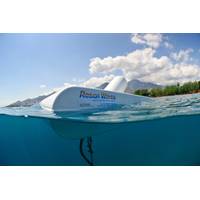
RENEWABLE ENERGY: Smart Power Buoy - Wave Power Expands Recharge at Sea Possibilities
and vehicles, and eventually all the way up to entire cities.The Resen Waves Smart Power Buoy is designed to harness the constant movement of waves to power autonomous machinery (AUVs) and instruments in the sea with clean, renewable, continuous energy while facilitating real-time, uninterrupted data communications.Resen Waves’ Smart Power Buoy sits at the crux of an important crossroads and that's renewable energy and the emerging need to provide power at sea. While working in the sea is never simple, Roland Boysen, CCO, contends that his company is cracking the code on generating power from

 August 2025
August 2025





